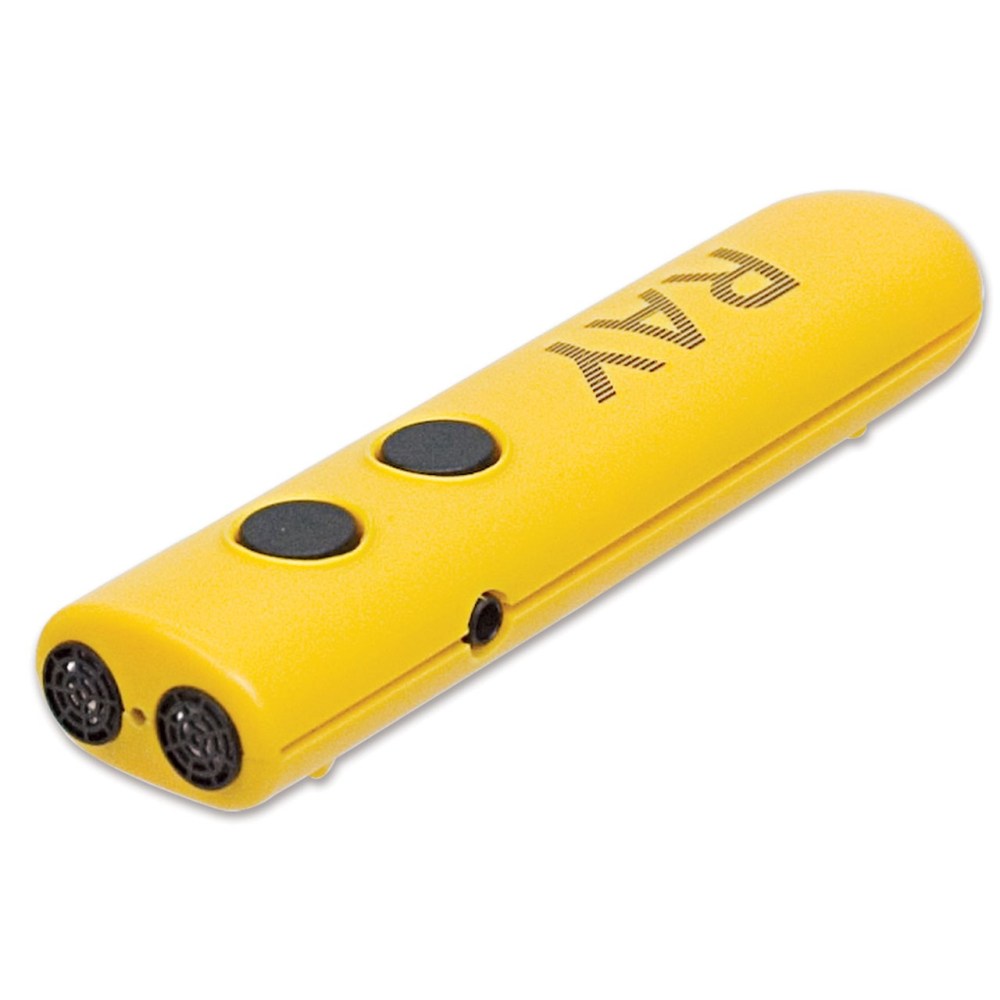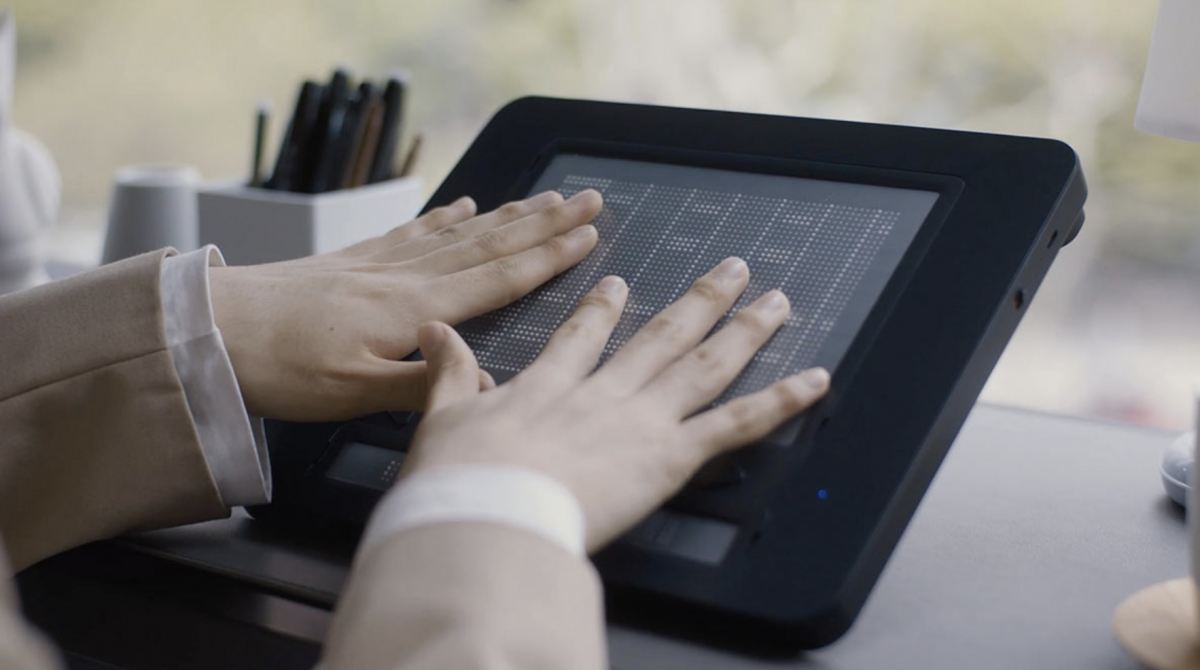Smart Glasses for the Visually Impaired: Innovations in Vision Support
Smart Glasses for the Visually Impaired: Innovations in Vision Support
Blog Article
Discover Cutting-edge Tools Developed for the Aesthetically Damaged
The development of cutting-edge devices for the aesthetically impaired stands for a significant development in ease of access and independence. Technologies such as clever glasses with AI capacities and mobile applications designed to supply acoustic descriptions are improving everyday experiences for customers. Additionally, wearable gadgets that employ haptic responses improve environmental recognition, while contemporary Braille advancements provide new ways to engage with text. As these tools proceed to advance, their effect on the lives of those with aesthetic impairments elevates crucial concerns about the future of inclusivity and autonomy in numerous elements of life. What exists in advance in this technological landscape?
Smart Glasses for Navigation

Smart glasses designed for navigating are revolutionizing the means aesthetically impaired individuals communicate with their atmosphere. These sophisticated devices use a mix of cam innovation, expert system, and auditory comments to give real-time information about surroundings. By using challenge discovery systems, clever glasses can signal individuals to possible hazards, allowing safer wheelchair in both unknown and familiar settings.
The combination of GPS modern technology better enhances navigation capabilities, permitting individuals to get acoustic instructions as they move. This hands-free approach not only cultivates independence but also encourages aesthetically impaired individuals to navigate urban landscapes with boosted self-confidence. In addition, several wise glasses are outfitted with functions that determine spots and street signs, providing contextual details that improves the customer experience.
Additionally, the growth of these gadgets is continually progressing, with firms functioning to enhance the accuracy of item recognition and expand the series of navigational attributes. As clever glasses come to be extra inexpensive and available, they hold the prospective to significantly change every day life for aesthetically damaged individuals. Ultimately, these ingenious devices represent an important step towards inclusivity, offering boosted flexibility and a better sense of freedom for people browsing the world around them.
Mobile Application for Daily Living
Just how can mobile applications boost the day-to-days live of aesthetically damaged people? Mobile applications are transforming the way visually impaired individuals browse their environments, handle daily jobs, and accessibility information. These applications supply important assistance via numerous functionalities, fostering self-reliance and enhancing top quality of life.
A number of innovative mobile apps are designed especially for daily living. Applications like Be My Eyes connect aesthetically impaired individuals with sighted volunteers via video telephone calls, allowing them to get real-time help with tasks such as reviewing labels or browsing unfamiliar rooms. In A Similar Way, Seeing AI, created by Microsoft, makes use of expert system to define environments, reviewed text, and determine objects, effectively changing a mobile phone into a powerful tool for everyday aid.
Additionally, navigating apps customized for the aesthetically damaged, such as Aira and BlindSquare, offer audio-based directions and ecological information, enabling customers to traverse their surroundings securely and with confidence. Beyond navigating and immediate help, mobile applications also sustain organization and job administration, with attributes that help users set suggestions, create order of business, and track visits. In summary, mobile applications act as essential sources, empowering visually damaged individuals to lead even more independent and satisfying lives.
Wearable Technologies for Help
Empowerment via modern technology is increasingly evident in the world of wearable tools designed to assist visually impaired individuals. These cutting-edge devices incorporate seamlessly into everyday life, improving navigation and giving necessary feedback to customers. For example, clever glasses geared up with cameras can check out and acknowledge faces message out loud, permitting individuals to connect more confidently in social and specialist settings.
An additional significant improvement is using haptic responses systems in wearable devices. These systems make use of resonances or other responsive signals to convey info about the user's setting, such as barriers or adjustments in surface, enhancing flexibility and safety and security. Wearable technologies likewise consist of wristbands that connect to smartphones, signaling individuals to notifications with subtle resonances, therefore enhancing connectivity without dependence on visual signs.
As these innovations remain to progress, they are not only improving self-reliance for visually impaired individuals but also promoting a greater feeling of inclusion in culture. By linking the void between difficulties encountered in daily living and the potential for autonomy, wearable technologies act as essential devices in the mission for equal rights and empowerment for those with visual problems.
Sound Summary Tools
Audio description devices play a critical function in enhancing availability for aesthetically impaired people, giving them with the capacity to engage with visual media. Screen readers for the blind. These devices provide narrated summaries of vital visual aspects in films, television programs, and click for source live performances, making sure that customers can fully comprehend the context and feelings conveyed via visuals
Sound summary can be incorporated into different platforms, including streaming services, cinema screenings, and live movie theater. Many preferred streaming solutions currently include audio summary as an availability function, enabling audiences to pick it quickly. In enhancement to conventional media, specialized applications also exist, giving audio summaries for art events, museums, and other cultural occasions.
The effectiveness of audio summary rests on the ability of the storytellers, that must convey visual details succinctly without diminishing the original sound. Technologies in this field are also paving the means for more individualized experiences, where customers can change the degree of detail and pacing according to their preferences.
Braille Innovations and Gadgets
Braille devices and developments have substantially transformed the way aesthetically impaired individuals connect with text and info. Modern developments have actually led to the growth of flexible devices that improve literacy and independence amongst customers. Notably, Braille present modern technologies have advanced, enabling vibrant reading experiences. These gadgets transform electronic text into Braille, enabling users to access a vast range of info on computer systems, mobile phones, and tablet computers.
In addition, thin glasses mobile Braille notetakers integrate conventional Braille input with contemporary performances, promoting note-taking, organizing, and file modifying on the go. OCR devices for the blind. These small devices typically feature text-to-speech capabilities, connecting the space in between Braille and acoustic info
On top of that, cutting-edge Braille printers have actually emerged, permitting individuals to generate Braille tags, files, and academic materials efficiently. This access fosters higher participation in specialist and educational settings, inevitably promoting inclusivity.
In addition, research into smart Braille modern technologies remains to broaden. Tools that include man-made knowledge are being explored to offer real-time navigating aid and contextual details, improving the customer experience in diverse setups. Overall, these innovations show a dedication to empowering aesthetically impaired individuals through innovation, ensuring they can easily gain access to and engage with the globe around them.

Conclusion
The improvement of ingenious tools for the aesthetically damaged dramatically boosts self-reliance and high quality of life. Smart glasses, mobile applications, wearable innovations, audio summary devices, and Braille developments jointly encourage people by giving crucial navigation assistance, environmental understanding, and enhanced reading experiences. These innovations not just foster greater addition however additionally advertise freedom in day-to-day tasks, inevitably adding to an extra accessible and fair culture for visually damaged individuals. Proceeded development in this area holds assurance for further enhancements.
As smart glasses end up being extra obtainable and inexpensive, they hold the potential to dramatically change everyday life for aesthetically impaired users. Mobile apps are changing the way visually impaired customers browse their atmospheres, manage daily jobs, and gain access to information. Apps like Be My Eyes connect visually impaired individuals with sighted volunteers by means of video calls, permitting them to obtain real-time aid with jobs such as reviewing tags or browsing unfamiliar rooms.Furthermore, navigating applications tailored for the visually impaired, such as Aira and BlindSquare, offer audio-based directions and environmental info, enabling individuals to traverse their surroundings safely and confidently.The improvement of innovative tools for the visually damaged substantially enhances self-reliance and top see here now quality of life.
Report this page